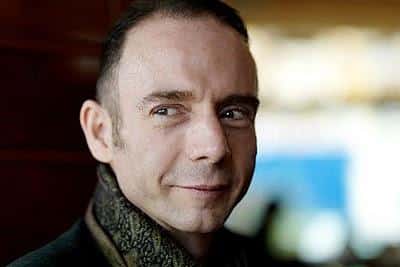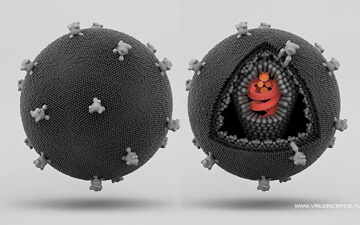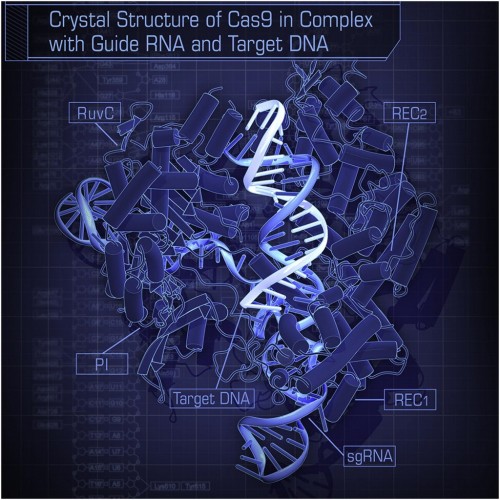Ray Brown was an HIV carrier and later also had leukemia, the medicine for the second disease happened to also cure him of the first, at least as it seems so far. The doctors learned how it happened to try to help others

When Timothy Ray Brown was diagnosed with HIV (the virus that causes AIDS) in 1995, he must have felt that his fate had not improved him. Indeed, if Brown had been one of the first patients in the West to carry the virus, he would surely have died within a few years. But in the last twenty years, various cocktails of drugs have been developed that inhibit the outbreak of the virus in the body, and Brown made full use of them. They were expensive and caused unpleasant side effects, but they kept Brown alive. The virus did remain in his body and could have passed to others through sex, but that is the price Brown had to pay to survive.
It certainly wasn't an easy life for Brown, but it was a life. Then, in 2006, Brown found that his fate had been cruel to him again. He began to feel so weak that he could not ride his bike. A quick examination showed that he had a particularly deadly form of leukemia - blood cancer.
This was the lowest point in Brown's life. From there, it was only possible to go up. And surprisingly, this is exactly what happened, until he completely recovered from the blood cancer and the HIV virus at the same stroke.
Brown's doctors decided that he should undergo a bone marrow transplant to deal with the cancer. What is the relationship between cancer and the bone marrow, that area deep inside the bone tissue? The answer is that blood cancer describes a condition in which cells in the patient's original bone marrow begin to divide rapidly and uncontrollably. To cure the cancer, it is necessary to get rid of all the cells that are out of control. This can be done relatively easily through targeted radiation and other treatments, but the patient is left without bone marrow - the tissue that produces the body's critical white and red blood cells.
This is why Brown needed a new bone marrow transplant, right after all the bone marrow cells in his body were destroyed.
At this point Brown's story took a turn for the better. The German doctor who treated him - Dr. Gero Hutter - knew that the HIV virus attacks the white blood cells that are produced in the bone marrow. He also knew that a very small part of the European population - about one percent - has a mutation that gives them immunity against the HIV virus. The same mutation distorts the 'cell entry handle' (a receptor called CCR5) that the virus uses to enter the cell. What would happen, Hatter wondered, if bone marrow cells endowed with immunity to the virus were transplanted into Brown's body?
Hatter dared to hope that the new bone marrow cells would be well absorbed by Brown's body, and produce white blood cells that would be resistant to the virus. Along the way, he also intended to cure Brown of the cancer. But to do all this, he had to find a bone marrow donor that would be immunologically similar enough to Brown, and also carry the specific mutation required.
Fortunately for Braun, in Germany, more than 2.5 million people are registered in the donor database, and in a short time, 267 donors who might be suitable for Braun were found, and one of them carried the required mutation. In 2007, the immune bone marrow was transplanted into Brown's body. The transplant did not go well, and a year later the doctors repeated the procedure, this time with complete success. The cancer disappeared from Brown's body, and tests showed that the number of HIV viruses gradually decreased, while the white blood cells increased in number and resumed their role of protecting the body from foreign invaders. Brown stopped taking the cocktail, and in 2009 the results of the study were published in one of the most respected medical journals -New England Journal of Medicine - and most expert doctors now agree that Brown is completely cured of the virus. They also agree that this required a complex, dangerous and expensive medical procedure, of the kind that is hard to believe could be applied to The 23 million poor carriers in AfricaThe, or even on the wealthy carriers in the West.
But there is hope for the future.

to re-engineer man
The field of genetic engineering has been known to us for forty years, since the discoveries of the enzymes - the biological machines inside the cells - the first to be able to cut the genetic code of the cells and insert new segments into it. The genetic code contains the operating instructions for each cell, and mutations that occur in it determine how the cell will function and also what molecules it will present on its surface. A mutation of the right kind can, as we have already seen, eliminate the handles necessary for the HIV virus to enter the cell. Most carriers of this mutation acquired it naturally - that is, from their parents. But are we able to reprogram cells - engineer their genetic code - to introduce the necessary mutation into them and protect them from the HIV virus?
The answer, as Yuet Kahn proved last month, is yes.
Kahn, who heads a group of researchers at the University of California San Francisco, relied in his research on two breakthroughs from the last decade: easy and convenient creation of stem cells, and simple and efficient programming of the genetic code.
Kahn used human cells and transformed them in the laboratory into 'induced stem cells' - that is, cells capable of regenerating all the different tissues of the body. Many predict that these cells will be of enormous importance in the medicine of the future, since they can be created from cells taken from the patient's body - thus making sure that the patient does not develop an immune reaction against them when they are transplanted again.
Into Kahn's induced stem cells, the mutation in the genes encoding CCR5, the handle of the virus, was inserted. Inserting a specific mutation into the genetic code of the cell is not an easy task, and until twenty years ago it was tedious, expensive and fraught with dangers for the patient. In some cases, the genetic code was damaged in other places than desired, and the patients developed cancer as a result of the treatment itself. But Kahn used the latest method in the genetic engineering laboratory, which is already clear today that will revolutionize the field: the 'CRISPR-Cas' method.
reprogram the genetic code
In the field of genetic engineering, invention pursues invention and use pursues development. At the end of 2013, two groups announced that they had succeeded in changing the action of almost every single one of the 20,000 genes found in the human genetic code. So that you understand the magnitude of the achievement, a similar study that started in 2007 was successfully completed only in 2013 - and cost the taxpayers one hundred million dollars. the difference? The researchers from six years ago used the most sophisticated genetic engineering tools that existed in 2007. Since then, at the beginning of 2013, the Crisper-Cass method was developed, and in less than a year it changed the face of genetic engineering.

The method relies on the fact (amazing in itself) that many bacteria have an active immune system, which they use to fight viruses. The viruses try to enslave the bacteria to their needs, and for this they insert short sequences of viral genetic code, which are supposed to make the bacteria do as they wish. But the bacteria are not cane killers. Using proteins called Cas, the bacteria are able to break down the viral genetic code that penetrates them. But Cas is a 'stupid' enzyme, devoid of its own choice. In order for Cas to recognize the viral genetic code, the bacterium has to feed the recognition instructions to the enzyme, in the form of an RNA sequence similar to that of the virus. And when the virus is destroyed, the bacterium collects the genetic sequences it left behind that are no longer harmful, so that it can feed them to Cass the next time a similar virus attacks it. These sequences are called CRISPER (Clustered Regularly Interspaces Short Palindromic Repeats).
And how is all this related to genetic engineering in humans? To make gene changes in cells, we need to cut the genetic code very precisely. Such precision was almost impossible in the past, but the Crisper-Cass system easily achieves it. The scientists only have to decide which point in the genetic code they want to hit, produce the appropriate CRISPR sequence (which can be synthesized at a cost of a few dollars in a lab) to guide Cas there, and watch with pleasure and satisfaction as the cells in the petri dish undergo in a matter of hours a change that previously required years of work .
"In the past it was very difficult for scientists to create the break in a targeted area of DNA." Dr. Eil Handel, who is currently conducting active research using the Crisper-Cass method, explains. "The previous technologies worked effectively enough, but it was very difficult to implement them in laboratories. Only very unique and dedicated laboratories had the ability to use the previous technologies. The CRISPR, on the other hand, relies on very basic tools of molecular biology found in every laboratory. A standard laboratory can easily use this tool, and the result is very impressive."
Kahn himself used the Crispr-Cass method to inoculate his stem cells against HIV. He reprogrammed the stem cells, immunizing them against the HIV virus. When the stem cells redifferentiated to form white blood cells, he showed that the white blood cells were also immune to infection by the virus in the Petri dish. Although he did not implant the cells in the body of an HIV carrier, there is no reason why the results should not be translated into clinical trials in humans already in the next year or two.
The Israeli angle
In Israel it is still difficult to find CRISPR-CAS experts, perhaps not surprisingly since the method received its groundbreaking refinements only a year ago. However, the next generation of researchers is already paying off with the method in research labs around the world.
Eil Handel earned a doctorate in biology at the Weizmann Institute, and is currently doing a post-doctorate at Stanford. He developed a new tool that was recently published in the scientific journal Cell Reports, which will be available for use in any laboratory and will make it possible to predict in advance what the degree of success in Crispr-Cass will be in different cells and on different genes.
"The greatest strength of this tool is that we can take patients such as sickle cell anemia patients, and isolate blood stem cells from them." He says. "With the help of the CRISPR technology, we will repair the mutation that is responsible for the disease in vitro. But before we return these cells to the patient's body, we need to make sure that the repair was successful and that we were able to repair a large enough number of cells. With the help of this technology we can make sure of that."
Handel's computerized tool is supposed to speed up the arrival of the technologies to clinical trials in humans, and hopefully will also improve their chances of success in passing the tests.
"The US authorities are very strict and meticulous, and require very complex experiments in order to prove that new genetic engineering treatments will not cause cancer." he explains. "There is a requirement to sequence the DNA in a very thorough manner to show that there are no unwanted changes in the genome. The main strength of our tool is knowing whether we were able to create the right change in the right place. At the same time, we use additional computational tools that are also able to predict for us in which other places unwanted changes could have occurred in the genetic code, so that we can check these places as well."
Handel's development illustrates a particularly great truth regarding scientific research today: researchers produce tools to be used by others in their research. In this way, the entire research is accelerated forward, and science and humanity only benefit in the process. This accelerated development process bodes well for the advancement of medicine and our future ability to better understand and fight diseases of all kinds. Handel understands very well the need for partnerships, and the way in which he will help society as a whole.
"We decided not to issue a patent on the technology." He says. "It's a diagnostic tool that can serve many laboratories, and right now the goal is actually to improve these technologies so that they reach the efficiency needed for the needs of genetic medicine and biotechnology. Our tool will help these labs move in this direction, so we released it to the public domain. We are even working on a tool that will be open to the general public online, and laboratories and companies in the industry will be able to use it freely and without contacting us."
In accordance with the cooperative spirit demonstrated by Handel, he intends to return to Israel in the coming years and impart to Israeli researchers in the life sciences the knowledge of using the Crisper-Cass method. "I believe that the quality of science in Israel is equal to the quality of science in the leading centers in the United States and Europe, and we have the capabilities to lead and develop and achieve achievements comparable to those of the scientists abroad." He says, adding that, "From my personal point of view, I want to raise my family and my children in Israel."
Summary
At this point, the desired words can already be said: there is already a cure for HIV and for the prevention of AIDS. It has been tried in the field (on one person), but the cost of treatment is enormous and while it requires the existence of a large pool of donors, some of whom are endowed with the necessary mutation. In short, the drug is still impractical for humanity as a whole. But this was also the case with penicillin when Fleming first discovered it. It took another twenty years before antibiotics became available to everyone at zero prices.
I believe - and there is no reason to think otherwise - that this will also be the fate of the cure for the HIV virus and many other diseases. In this era, in which invention chases invention, in which scientists from all over the world create innovations and developments with the stated intention of helping other researchers, it is very difficult to believe that a disease will be found that will be able to withstand even the tools that are being improved every year. And for additional support comes a new study that was published while I was writing this article, and shows that it is possible to use the CRISPR-Cas method to trim the genetic code of HIV viruses directly from the infected human cells, and to prevent re-infection.
Not convinced?
Remember: the cure for HIV is not a dream or a fantasy. The basic principles behind it are already understood. It has already been invented, and it is already here.
Now it's time to find a way to bring it to everyone.
More on the subject on the science website:

5 תגובות
The lack of the above-mentioned receptors is not problematic in itself (of course it is more immediate than death, but what are the consequences)?
Thunder
What you wrote is not nice... Pretty stupid too…
The process will be useful for many diseases that result from a genetic defect, perhaps even for most of them. This will be a huge leap forward in medicine. I have gout, a disease that results from a genetic defect that all humans and primates have, and manifests itself in some people, and I am waiting for a genetic correction!
Isn't it easier to be faithful to your partner?
Sounds like it's very simple to produce a vaccine. Instead of catching a person after he got sick and looking for a donor, you have to catch him before he got sick and take some stem cells from him, transfer them to treatment and transplant them again. This will not make him more sensitive to the diseases that CCR5 is needed to respond to because he will still have cells with the protein and if he gets AIDS he will already have immune cells that will survive...